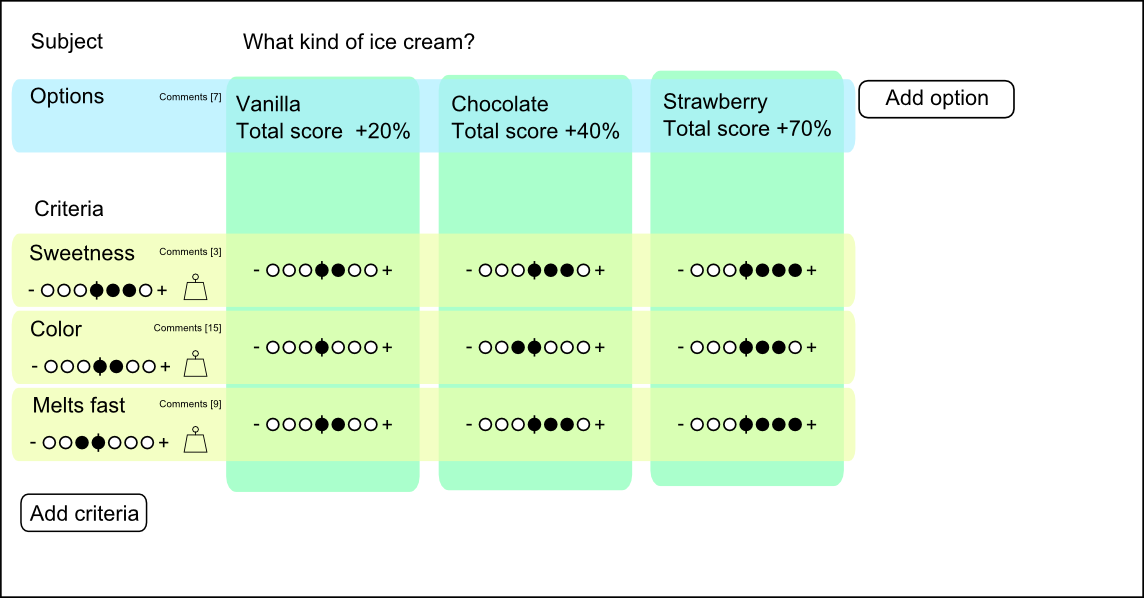Difference between revisions of "User:Tim"
| Line 13: | Line 13: | ||
By not voting on proposals directly but on criteria separately (with possibility to discuss on each item) there is more incentive to think about all angles. People can also add new proposals or criteria, but they have to be seconded by other voters to become valid as to reduce spamming. | By not voting on proposals directly but on criteria separately (with possibility to discuss on each item) there is more incentive to think about all angles. People can also add new proposals or criteria, but they have to be seconded by other voters to become valid as to reduce spamming. | ||
| + | |||
| + | |||
| + | == Sources == | ||
| + | |||
| + | [http://www.metagovernment.org/wiki/Systemic_Consensus] | ||
| + | [http://www.d-sight.com/learning-center/articles/buying-new-car] | ||
| + | [http://www.minddecider.com/Articles.Group_decision_making.htm] | ||
Revision as of 03:08, 23 February 2013
Voting
Voting nowadays is usually done in a participatory democracy. This means that one person is elected to speak for the entire population of a village, state or country. The people have to trust that man or woman to act in their best interest. This system is based on the ancient notion that the representative had to ride on a horse to the capital city to "let their voice be heard". Today however this notion becomes hopelessly outdated a the money for campaign contributions speaks louder than votes.
Some other countries allow the people to vote for certain items that are put up for consideration. Swiss for example has a participatory democracy. They still vote for their politicians in the classical way, butiIf people object to something the politicians decided (and get enough signatures) the item is up for vote for the entire country with a binding conclusion. The politicians cannot ignore the vote as they are overruled by the people. But the possibility for people to propose alternative solutions is still small and the vote is still yes/no.
Concensus building
An other way of coming to a decision is to not vote yes/no on one solution but to vote on multiple alternative solutions with the classic agreement gradient: strongly disagree, disagree, neutral, agree, strongly agree. All votes are summarized and the one most agreed upon wins. This works but even then votes are sometimes made emotionally. Discussing rationally in normal forum style and proposing alternatives without it becoming chaotic is difficult.
To handle a large number of persons and encourage them to chose rationally, other models are needed. The solution proposed below is to not vote on the proposals directly but on the criteria for those proposals, and also give an importance or weight to a criteria.
By not voting on proposals directly but on criteria separately (with possibility to discuss on each item) there is more incentive to think about all angles. People can also add new proposals or criteria, but they have to be seconded by other voters to become valid as to reduce spamming.
